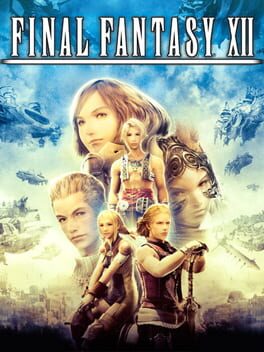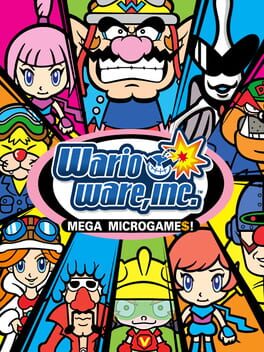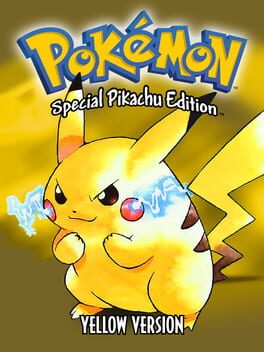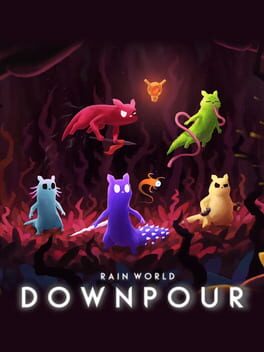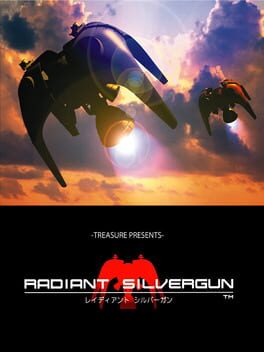Hattori
I liek vidyagaems
Favorite Games are the best games I played recently.
Badges

GOTY '23
Participated in the 2023 Game of the Year Event

Pinged
Mentioned by another user

GOTY '22
Participated in the 2022 Game of the Year Event

Listed
Created 10+ public lists

Shreked
Found the secret ogre page

Gone Gold
Received 5+ likes on a review while featured on the front page

Organized
Created a list folder with 5+ lists

Treasured
Gained 750+ total review likes

Best Friends
Become mutual friends with at least 3 others

Busy Day
Journaled 5+ games in a single day

Donor
Liked 50+ reviews / lists

Roadtrip
Voted for at least 3 features on the roadmap

3 Years of Service
Being part of the Backloggd community for 3 years

GOTY '21
Participated in the 2021 Game of the Year Event

Famous
Gained 100+ followers

Adored
Gained 300+ total review likes

Trend Setter
Gained 50+ followers

Loved
Gained 100+ total review likes

Well Written
Gained 10+ likes on a single review

GOTY '20
Participated in the 2020 Game of the Year Event

Elite Gamer
Played 500+ games

Gamer
Played 250+ games

N00b
Played 100+ games

Popular
Gained 15+ followers

Noticed
Gained 3+ followers

Liked
Gained 10+ total review likes
Favorite Games
735
Total Games Played
002
Played in 2024
150
Games Backloggd
Recently Played See More
Recently Reviewed See More
It interprets the plumber's magical landscape as one filled with ancient history and sci-fi cultural artifacts from our own planet that somehow feel more alien than what the Mushroom World has accustomed us to. There is definitely something very otherwordly and dreamlike about starting a level with the implication that Mario arrived on a UFO and that the enemies you will be facing are Easter Island face fellas, and the changes made to accomodate the limitations of the hardware, such as the exploding turtles and the bouncing ball power up, further elevate Super Mario Land's odd quirky vibe.
What I love the most about it though is its brevity. Low of difficulty and brisk paced, Super Mario Land is beatable under 30 minutes with little chance for game overs and with enough variety sprinkled inbetween that makes picking it up for a high score attempt highly leasurable and absolve it of the settling monotony that plagues the repeating assets and levels from SMB1. Add to that the beautifuly simplistic monochrome sprite line work and eternal earworm tunes that will never leave your head for all of your life and I'm very tempted to call it a perfect game, despite its lackluster platforming physics. A priveledged Mario that preceeds its own brand, that's pretty neat.
Try not to feel joy while listening to this:
https://www.youtube.com/watch?v=0f1I1i_t94E&ab_channel=GilvaSunner%3AArchive
Picking it up nowadays, more than 20 years since that precious moment of my life where I gladly devoted myself to it, the feeling is a bittersweet one. With its secrets, surprises and discoveries now obsolete, the rudimentary gameplay fails to engage, and its combat is one of mindless grind and broken mechanics that are only challenged by the occasional difficulty spike, once a compelling puzzle to be solved as kid, now serving only to expose the game’s more blatant weaknesses.
Its magic wasn’t totally lost on me just yet, however. The sudden color pallet changes when arriving at a new area, the simplest of chiptunes that were instantly recognizable on note one, the kinesthetic pleasure of speeding through its routes with a newly acquired bike and its cheerful theme, and the occasional excitement at the sight of a personal favorite, managed to sustain my interest throughout its primitive JRPG nature, as it quickly took a backseat to the core allure and fun that made this the biggest franchise of all time, one that never fails to leave you in a state of impending suspense as you watch your pokeball twitch its way into a new catch or fill you with excitement as you witness your personalized team finally evolve after your hard effort, regardless if you already know what it will turn into or not.
Reviewing Pokemon Yellow in a vacuum is nonetheless a fruitless endeavor, considering so much of its purpose and qualities are tied to the social aspect that was so crucial to the Pokemon mania of the 90s, leaving the game itself in an incomplete state whose true experience is forever inaccessible to the ones who are unfortunate to not have lived through those magical years. Think of it as trying to relive the early days of your favorite MMO, it’s just not possible, is it? Nostalgia is a double-edged sword, and it’s no truer than in Pokemon Yellow’s case. Still, climbing the ranks through every Gym and surviving the Elite Four gauntlet so you can slap the grin off the face of Blue with your ever trustworthy Pikachu remains a satisfying throwback to a time when I would gladly listen to fake rumors on how to catch Mew from dumb kids at school.
A complete map of the Sky Islands ends up exposing a clear picture of the TOTK experience, one of sparse copy pasted content overlaying a preexisting world already exhausted 6 years ago, and not even The Depths’ initial excitement of surprise and mystery manages to sustain itself when it quickly dilutes into a lifeless landscape of repeated vistas, encounters, and rewards. Ultrahand lit up the internet with numerous videos that showcased the boundless possibilities of TOTK’s outlandish physics engine, but once past that initial, admittedly fun phase of building janky flying vehicles and wonky death laser robots, the motivation or even necessity to waste time on it quickly evaporates as the grind required for Zonite resources starts to overstep the enjoyment of emergent creative building that ceases to be engaging or productive outside the small pockets of content designed around them. Regardless of how fun and limitless the Zonite tools can be, what use are they when placed in a game that wasn’t initially built around them, and ultimately didn’t need them in the first place?
The reduction of Ganon in BOTW into a malevolent cancer secretly expanding its reach all over Hyrule, eventually usurping its technology and turning it against the people who exploited it without truly understanding it, brilliantly paralleled Nintendo’s passive role in the franchise’s stagnation, a company that conformed into a worn-out formula that ended up festering from within. The “Destroy Ganon” quest pop up was the bold statement of a series willing to throw away all its excess to rediscover its core ethos through an aptly amnesiac Link that bridged the gap between the character’s motivations and the player’s desires, and while the scarce narrative might have been a sour spot to most fans, BOTW’s holistic vision of open world design provided unique storytelling mostly told through the mere act of play.
TOTK exploits this dispersed storytelling method once more, this time failing to measure up to the urgency at hand and without the blank slate context that was integral to the premise of BOTW, as a cunning and fully conscient Ganondorf resorts to be put on standby until the end of the game while you stumble about Hyrule doing the repeated song and dance of regathering resources through the completion and collecting of shrines, towers, dungeons and flashbacks that little have to offer in terms of narrative momentum. Most baffling of all is the inclusion of yet another redundant Hyrule ancestry plotline that not only rejects the continuity of the series, but also of TOTK’s own predecessor. What exactly was the point of undermining the Sheikah’s relevancy and influence as Hyrule’s ancient civilization with the addition of the Zonai who just ended up complicating this world’s history with uninteresting and boring lore that substantially leads nowhere and fails to connect to BOTW? Boy did I sure felt stupid when I got excited thinking Ganondorf was directly addressing the Timeline in the opening cutscene.
BOTW reinvigorated both a franchise and a genre, and the stripping off much of the franchise’s baggage in favor of an uninterrupted experience of exploration focused solely on the player’s kinesthetic compulsions will forever represent some of the most fun I have had with a videogame. While recognizing many of its flaws, rarely did they ever diminish my appreciation for the things it did best, and I saw BOTW’s underdeveloped ideas as fertile ground for improvement. A new Majora’s Mask was always a pipe dream, but I’m sure that no one expected TOTK to be little more than just a glorified BOTW DLC. It’s not just that TOTK fails to address any of BOTW’s most agreeable criticisms, but it also manages to exacerbate and accentuate them to an intrusive degree by the sheer redundancy of giving you the same exact 100+ hour experience, and while BOTW had the privilege of letting its magic act before inevitably dissipating, TOTK does not.
The few instances of novelty TOTK allows us are unsurprisingly some of the best and most inspired moments the series has produced and showcase the potential TOTK had, but it becomes difficult to cherish those memories when they are stashed away in-between dozens of hours trudging through a well-known map with no more secrets left to be uncovered and whose repeated content isn’t placed in it with the same care and thought as it once was. Is there truly anything more pathetic than most of The Depths rewards being DLC and Amiibo costumes from the previous game? Ultimately, the biggest problem with TOTK is that it doesn’t just lack an identity of its own, it also ends up robbing it from BOTW and damaging it in the process. You are forgiven, Skyward Sword.
PS: I’ll throw a bone at TOTK, regarding its impressive physics engine and how it revealed how out of touch so much of the videogame discourse is with comments on TOTK’s outdated graphical fidelity and performance while the gameplay itself is leagues ahead of anything that we have been witnessing recently with the big “cutting edge” titles.
